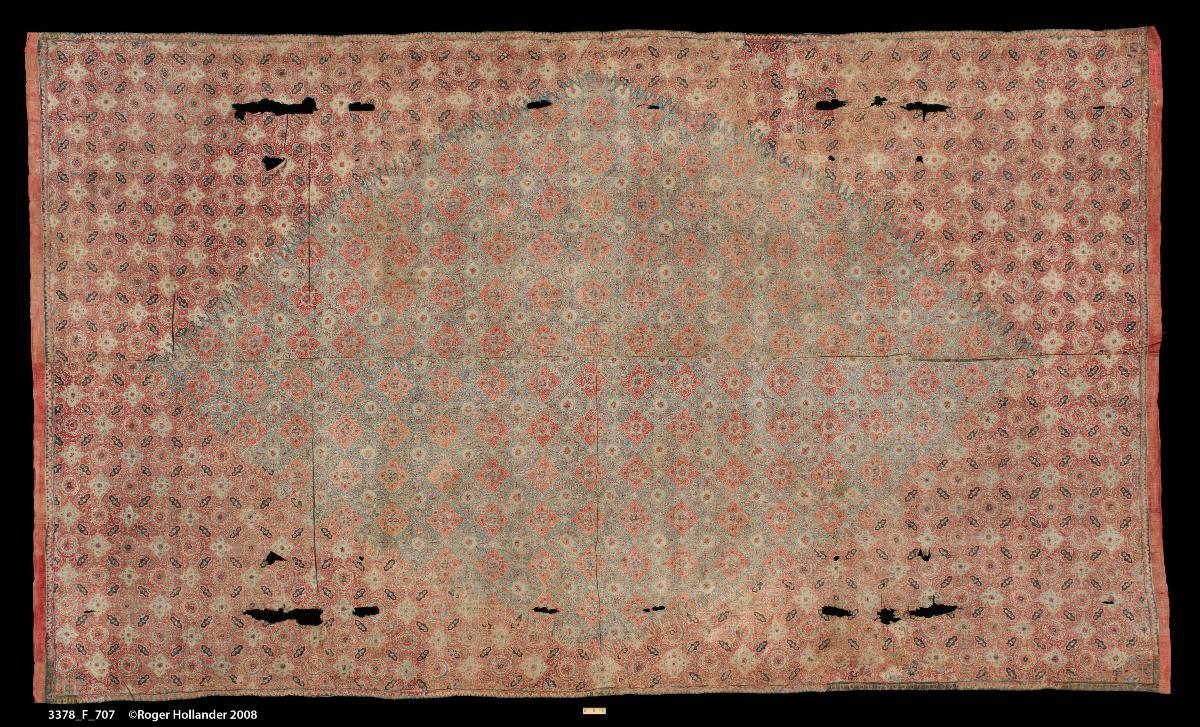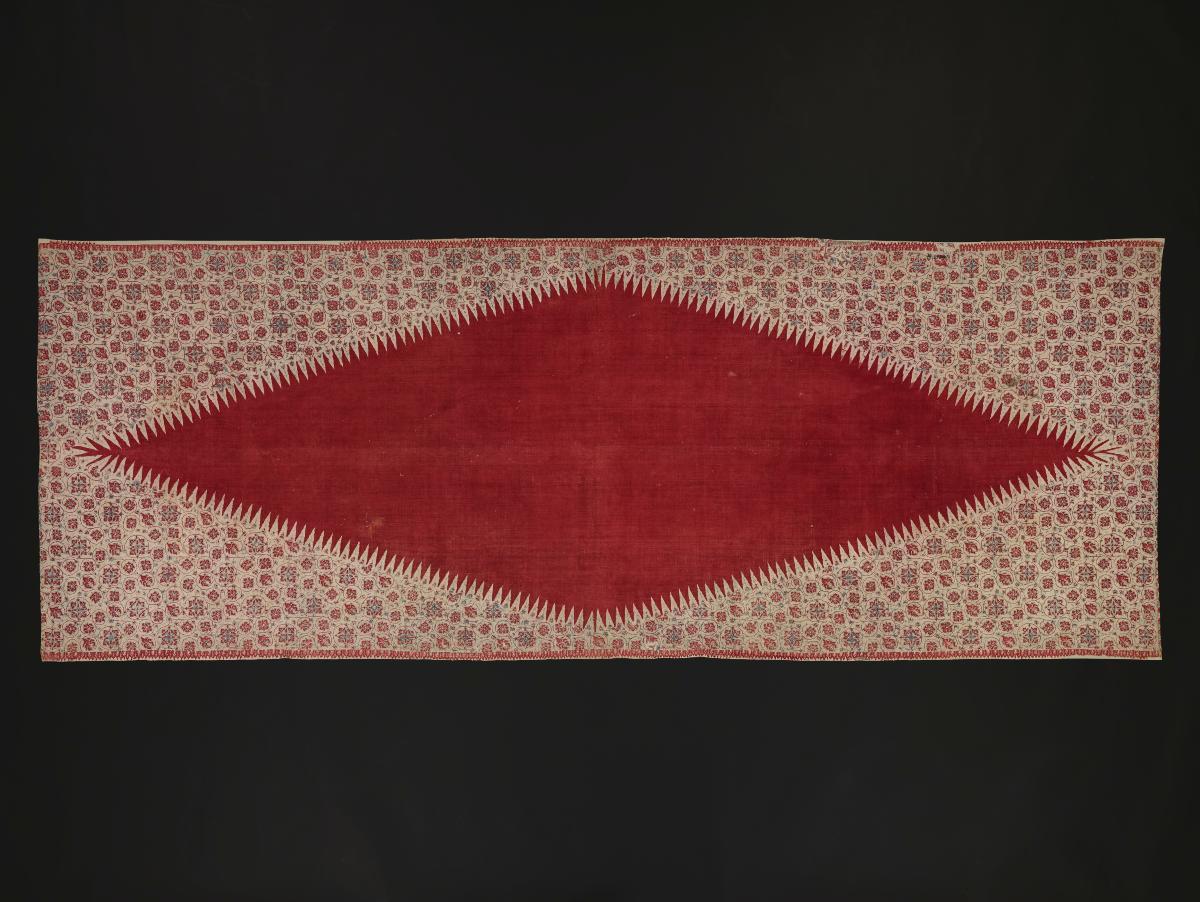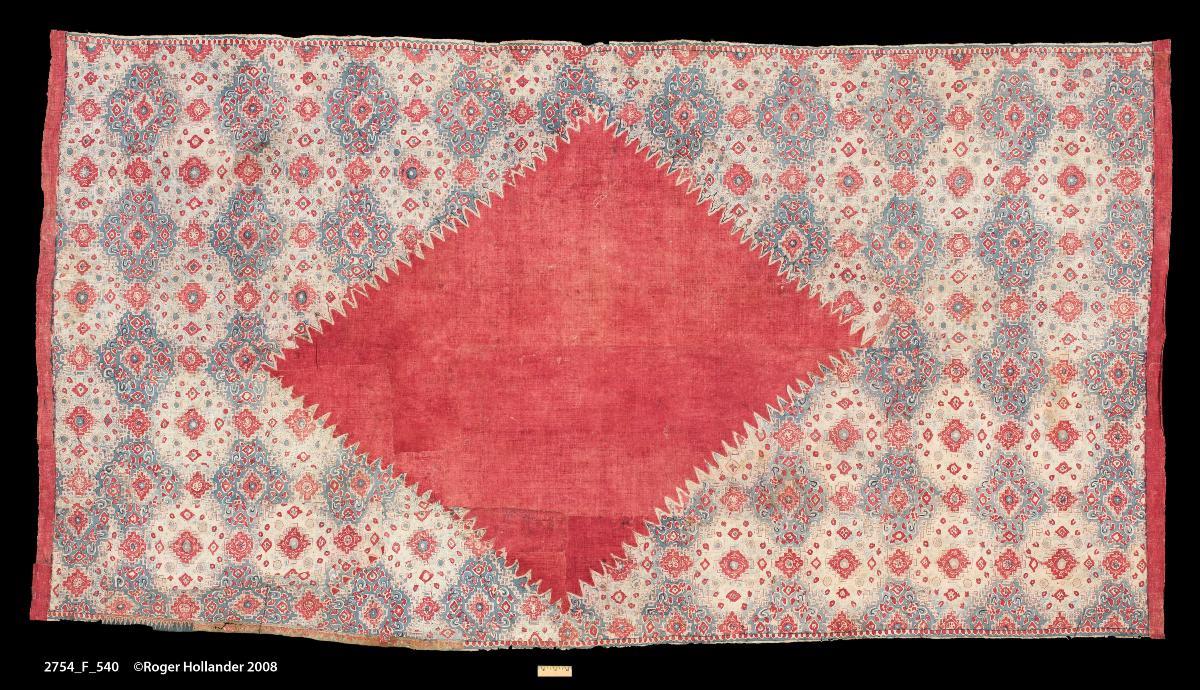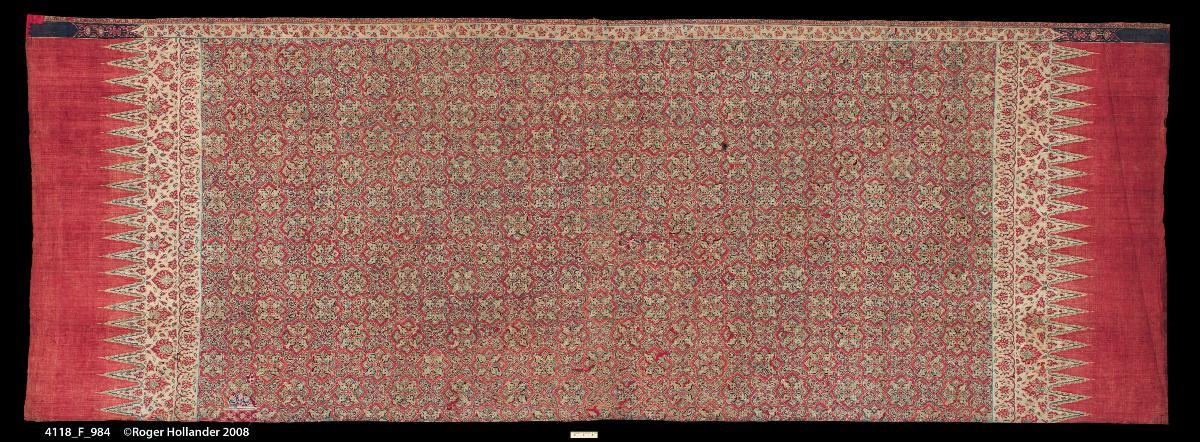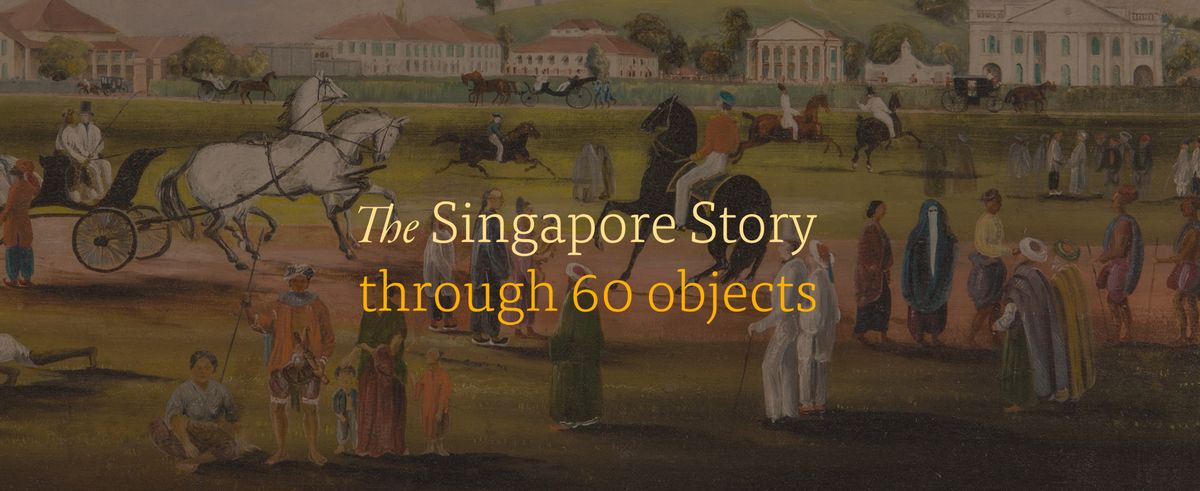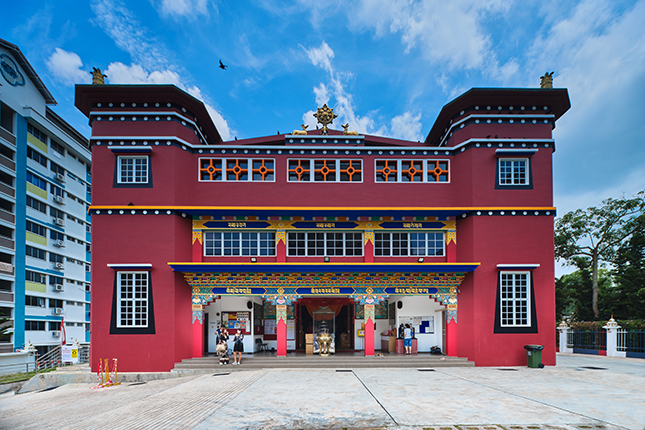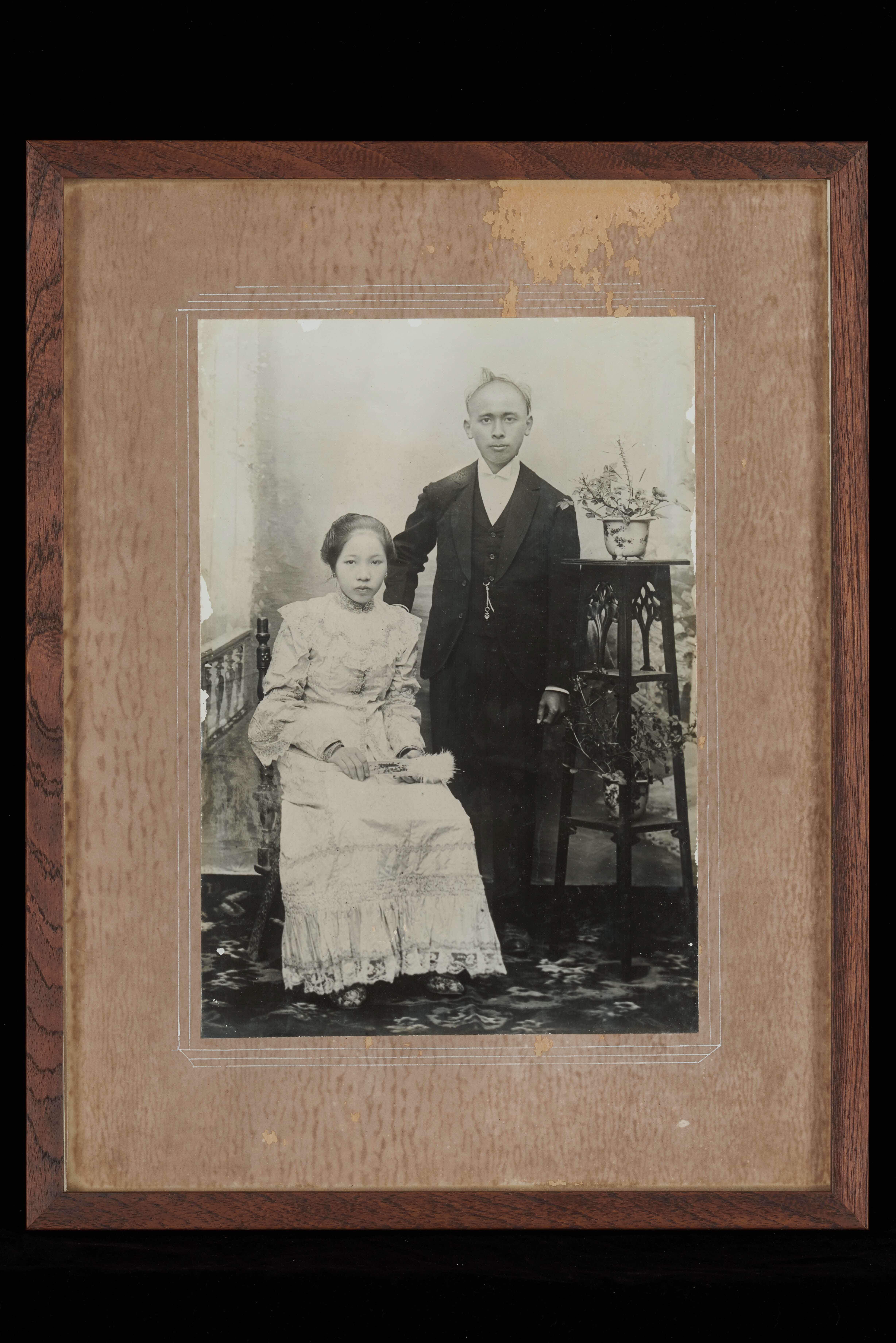This 'kain lelehur' is dyed using the mordant and resist dyeing technique on cotton tabby weave cloth. It features a 'dodot' style large oval motif in the centre with tile-like floral and diamond-shaped designs surrounded by similar patterning in reverse colours.Mordant-dyeing describes a process of using a mordant as a fixing agent to bond the dye to the cloth. Resist-dyeing uses either molten wax or moist mud as resists to prevent the dye from colouring those areas. These two techniques may be used separately or in combination during the dyeing process. Large quantities of Indian textiles produced in various centres in Gujarat, the Deccan and Coromandel Coast were traded across Southeast Asia until the end of the 19th century. Among their functions, they served as attire for royalty and as diplomatic gifts, as displays on festive occasions, and as clothing for the populace at rites of passage and other ceremonies. These trade cloths had a strong influence on the development of Southeast Asia textiles as it is thought local makers began producing cloth, possibly borrowing patterns and motifs from earlier Indian examples, to make up for the shortage of the Indian ones that began to decline in numbers.





